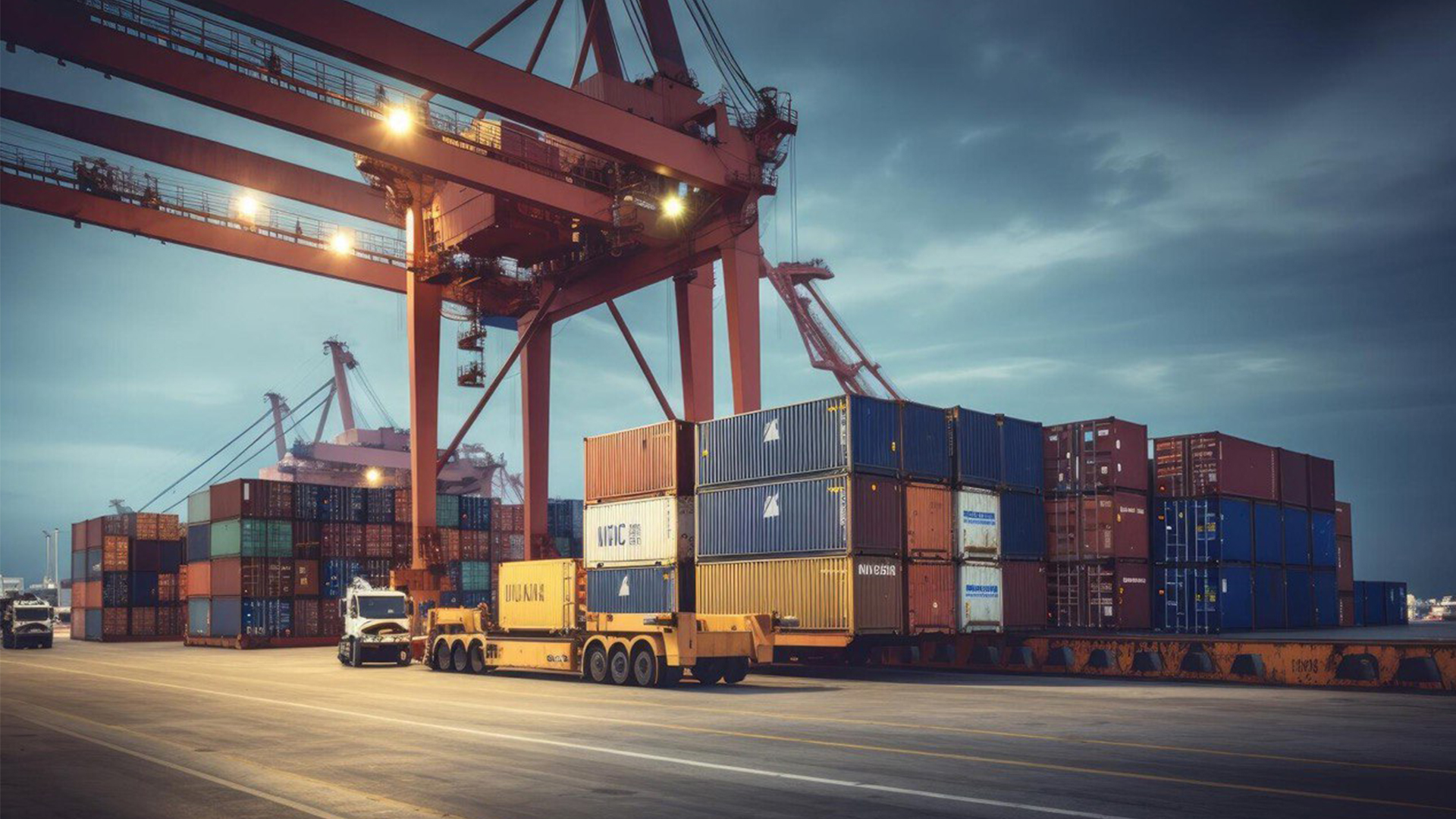Ports, Retail Season Bottlenecks, and the Role of Exports

As the retail season approaches its peak, U.S. ports are gearing up for an influx of imports that fuel the holiday shopping season. However, it is not just the surge in imports that leads to bottlenecks—exports, especially those related to agriculture like grain, also contribute significantly to port congestion. Balancing both incoming consumer goods and outgoing export products during this critical time creates complex challenges for the transportation industry. Here’s a deeper look at how both imports and exports impact U.S. ports and supply chains during this high-pressure period.
The Retail Surge: A Critical Bottleneck
As the holiday season ramps up, U.S. ports, particularly those on the West Coast (Los Angeles, Long Beach) and East Coast (New York, Savannah), see a massive influx of consumer goods arriving from Asia and Europe. These goods include electronics, apparel, toys, and other items crucial for retailers to stock in time for major shopping events like Black Friday, Cyber Monday, and Christmas.
This retail-driven surge creates significant challenges:
-
Port Congestion: With increased container traffic, port terminals can become overwhelmed, leading to delays in unloading ships.
-
Longer Dwell Times: Containers often sit at the port for longer periods, awaiting transportation by truck or rail, causing a backlog.
-
Higher Shipping Costs: As capacity tightens, transportation rates increase, further driving up costs for retailers and logistics providers.
But while the focus is often on the flood of imports during this time of year, exports play an equally critical role in port congestion.
The Impact of Agricultural Exports on Bottlenecks
As the U.S. enters its peak retail season, another significant player steps into the logistics arena: grain exports. The U.S. is one of the world’s largest exporters of agricultural goods, particularly grain (corn, wheat, soybeans), which must be shipped to global markets in tight timeframes. The harvest season, which peaks in the fall, coincides with the surge in holiday imports, further straining port infrastructure.
Grain Exports and Seasonal Timing:
-
- Fall Harvest: U.S. grain exports peak during the fall as the agricultural harvest reaches full swing. Farmers and grain producers depend on ports to move large volumes of crops to overseas markets in a timely manner. Delays in shipping grain can lead to spoilage and lost revenue, making time-sensitive exports a priority.
- Port Congestion: During the retail season, port terminals are already congested with incoming retail goods. When you add the surge of grain exports, it becomes even harder to manage both import and export flows efficiently.
Competition for Resources:
-
- Limited Capacity: The demand for transportation resources (trucks, rail, and ocean carriers) increases exponentially during this time. Importers and agricultural exporters both rely on the same infrastructure—chassis, trucks, rail capacity, and port workers—causing a bottleneck in logistics operations.
- Chassis Shortage: With both imports and exports moving at higher volumes, there’s often a shortage of chassis (the trailers used to haul containers), limiting the speed at which containers can be moved from ports.
Balancing Imports and Exports: The Ripple Effect
Both imports and exports play crucial roles in U.S. trade, and the seasonal spikes for each are not easily separated. The competition between retail imports and agricultural exports leads to several logistical challenges:
Prioritization Conflicts:
-
- Shippers and logistics providers face tough choices in terms of prioritization. Retailers need their products quickly to meet consumer demand, while grain exporters are under pressure to move products to global markets before price fluctuations or weather conditions affect the crops.
- This creates a tug-of-war over limited transportation resources, often resulting in delays for both importers and exporters.
Increased Costs Across the Board:
-
- Both the import surge and export demands drive up rates for trucks, ocean freight, and rail. Grain exporters, in particular, may find themselves paying more for transportation during peak season, as carriers and logistics providers focus on the high-volume, high-margin retail freight.
- Delays in moving grain exports not only increase storage costs but also risk missing critical delivery windows for international buyers, which can hurt U.S. agriculture’s competitive standing globally.
How Shippers Can Navigate the Bottlenecks
The interplay between retail imports and agricultural exports creates a complex logistics landscape during the peak season. To manage these bottlenecks, both shippers and logistics providers need to be proactive:
Plan for Congestion:
-
- Early planning is key. Whether you're moving retail products or agricultural goods, securing capacity well in advance of peak season is essential. This means locking in transportation contracts early and communicating clearly with logistics partners about shipment schedules.
Diversify Ports and Transportation Modes:
-
- Instead of relying solely on major ports like Los Angeles and Long Beach, shippers should consider utilizing secondary ports or exploring intermodal options like rail to ease the pressure on congested areas.
Leverage Real-Time Data:
-
- Using real-time tracking systems and analytics can help shippers anticipate delays and adjust routes or schedules as needed. By staying informed about port conditions and transportation capacity, companies can make better logistical decisions and avoid costly delays.
Final Thought
The holiday retail season isn’t just about the massive surge of imports—it’s also about the simultaneous demand for exports, particularly from U.S. agricultural producers. As both importers and exporters compete for limited resources, bottlenecks at U.S. ports become inevitable, driving up costs and creating delays across supply chains. By planning ahead, diversifying transportation strategies, and maintaining clear communication with logistics partners, shippers can better navigate these challenges and keep their supply chains moving smoothly through the busiest time of the year.
At NTP Freight, we specialize in helping shippers manage the complexities of peak season. Contact us today to learn how we can optimize your logistics strategy and keep your supply chain running efficiently during this critical time.
Written by Victor Kowalski
 29 Sep 2025
29 Sep 2025
The future of logistics automation: AI, Tracking & predictive analytics
The logistics industry is undergoing a technological transformation. Supply chains are becoming more complex, while customers demand speed, accuracy,…
Read More 24 Sep 2025
24 Sep 2025
Transparency in logistics = Customer trust
In logistics, speed and accuracy of delivery are essential. But today, customers expect more: they want full transparency at every stage of transport…
Read More 22 Sep 2025
22 Sep 2025
5 Steps to building a reliable supply chain in the USA
A reliable supply chain is the foundation of a stable business. In today’s world of constant market changes, global challenges, and seasonal fl…
Read More